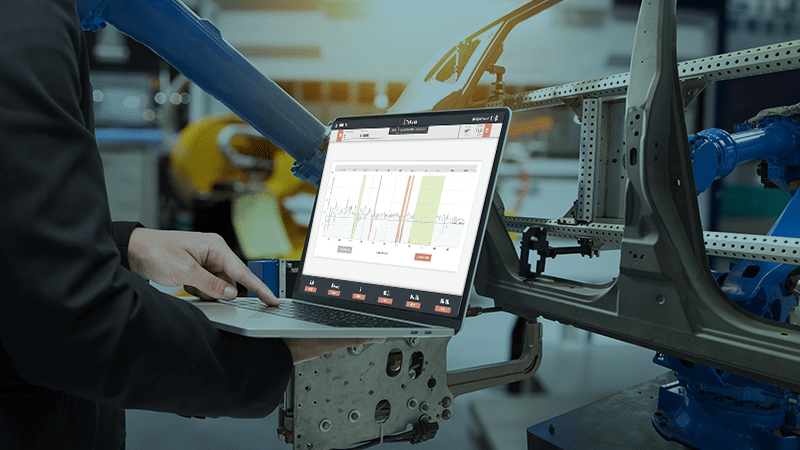
The importance of User Experience and User Interface in MES software
29 November 2022
Production lead time in manufacturing: why is it important to measure it?
17 March 2023Production costs: what are they and why is it important to calculate them?
Within a manufacturing process there are various production costs to be incurred. Their correct estimation and calculation is important for defining business objectives and estimating margins. In this TechStory we tell you what production costs are and how to calculate them correctly.
Any production process brings with it the need to bear costs (called production costs or production costs) in order to be able to produce the desired product. Predicting what the production cost incurred will be, and doing it as accurately as possible, is essential. Only with this datum is it possible to determine the profit margin to be obtained and consequently the sale price of the asset. At a higher level, it means defining business objectives and the strategy to be implemented to achieve them.
The different types of production costs
There are different types of production costs. All are equally important and should not only be valued but also measured constantly.
– Fixed costs: for example that incurred to pay employees or the rent of any offices and production sites.
– Variable costs: such as raw materials, energy cost and transportation to name a few.
– Total costs: it is the sum of all fixed and variable costs.
– Average cost: the total cost of production divided by the number of all prices produced.
– Unit cost: how much it costs a company to produce a single unit.
– Standard costs: forecast of the costs that a company must bear during the year, essential for defining the budget, objectives and selling price. It is an estimate that is usually made once a year unless new factors intervene that can significantly compromise what was previously estimated.
– Actual costs: how much the company has really spent in a given period of time in the entire production process.
Starting from the estimated cost, by calculating these production costs, the company is therefore able to calculate the actual production costs. These are important to know if the company is working in the right direction to achieve its business objectives and valuable information to make strategic decisions and corrective actions in time.
Any discrepancies between the standard costs and the actual ones should push the company to a careful analysis of which factors have caused the business objectives in the costs budgeted at the beginning not to be achieved.
The unexpected that create variations
Recent years have shown how sudden events can lead to a reversal of one’s estimates at any time.
The increase in energy costs or raw materials, for example, has had as a consequence the increase in the selling price of numerous products, the variation of various price lists and the difficulty for many companies to achieve the set objectives.
This is why it is important to adapt to these changes in an agile and proactive way, implementing digital support tools, such as the MES software. Digitization is also an opportunity to review your processes. A review that could highlight further areas of intervention for the company to contain costs.
For example, in the world of packaging, the optimization of raw materials through a careful analysis of production planning often leads to combining several orders from different customers, for example it is a strategy used to reduce production costs as much as possible.
How to intervene on production costs?
What could a company do if it understands that it is incurring too high production costs, thus reducing its margins?
A first step is to correctly measure production.
Are there any areas where there is waste, such as raw materials, that could be limited? Could the different machines have a better energy performance? Are the production lines designed to make processes as efficient as possible, in a lean perspective? These are just some of the possible reasons why the actual total production cost may be higher than the estimated one.
From this analysis, the company must be able to identify any corrective actions to contain costs, thus reducing waste and inefficiencies to achieve the established production KPIs.
It is a constant and continuous work, as is the whole process of improving production performance. The final goal must always be the achievement, and if possible exceeding, of the set business objectives, reacting in an agile and proactive way to the inevitable changes in the surrounding environment.
Finally, the continuous monitoring of the surrounding environment is also fundamental which, as seen, has an impact on any company. In an increasingly interconnected world with long and connected supply chains, it is no longer possible to ignore and avoid that any crises, even if distant, may also involve one’s own company.
Try TechMass
At TechMass we are accompanying numerous manufacturing companies in a process of digitization and continuous improvement which aims to reduce waste and inefficiencies which, as we have just seen, have a significant impact on economic results. Thanks to our solution, it is possible to accurately measure planned and unplanned stops, detecting inefficiencies of both machinery and processes.
If you are interested in finding out how you could easily monitor the entire production process and energy consumption of your machinery, contact us!
TechMass diventa TeamSystem!
Abbiamo percorso tanta strada insieme, e per migliorare ogni giorno i nostri servizi abbiamo deciso di continuare a crescere insieme a TeamSystem! Non cambierà nulla per te e i nostri servizi andranno in continuità. Il nostro sito nelle settimane successive sarà spento, ma potrai trovarci nel sito di TeamSystem!




